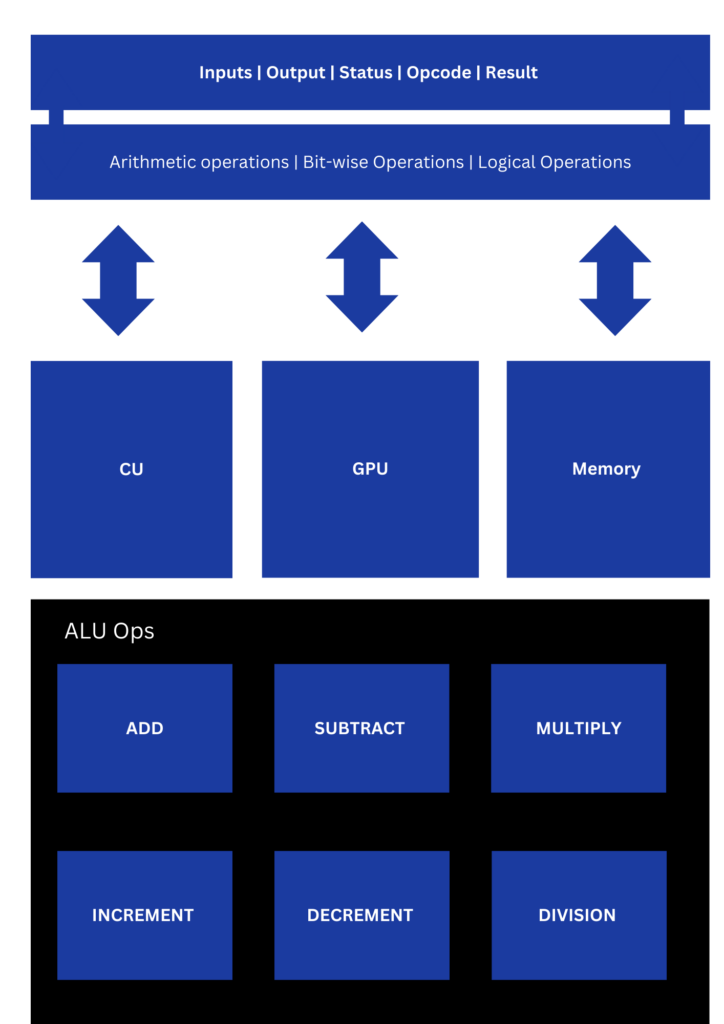The register is the smaller memory unit, which holds data during processing. The register holds data, physical addresses, instructions, operands, and character values.
The register holds data and instructions for real-time processing. Registers hold data that the CPU is processing.
The instructions stored in the register will go through processing, eg the value stored in two registers can be added via add operations, and it can subtracted via substations operations.
Types of registers:
- Program counter
- Instruction register
- Address Register
- Accumulator register.
The registers will hold the instruction, operations, addresses, and values which will be processed by the CPU and stored in the primary and secondary memory layers.
The memory layer will work in sync with the CPU, and the fetch and execute cycle will be synced with the clock speed of the CPU. CPUs have registers that store real-time data for processing.
Register will fetch, store, and update the data and instructions to the CPU on a real-time basis during computational tasks. Registers are high-speed storing units present in the CPU.
FETCH – EXECUTE cycle is carried out by REGISTERS in CPU.
The bit length of the register is based on the processor architecture and design.
RAM —-> REGISTER ———-> CPU + ALU
The instruction is first stored in the register then the instruction/address is processed by the control unit and the ALU.
First, the Instruction, address, and value will be stored in registers and then it will be processed by CONTROL UNIT and ALU which are the core components of the CPU.
- OTR |8 BITs| Output register
- (OUTR is used to hold the output characters)
- INPR |8bits| Input register
- (INPR is used to hold the input characters)
- PC |1 bits| Program counter
- (Program Counter is used to hold the address of the instruction)
- AR |12 bits| Address Register
- (Address Register is used to hold memory address)
- DR |16 Bits| Data Register
- (Data Register is used to hold memory operand)
- AC |16 bits| Accumulator
- (it is referred to as process register / general purpose register)
- IR |16 Bits| Instruction register
- (It is used to hold instruction code)
- TR |16 bits| Temporary register
- (IT IS USED TO HOLD TEMPORARY DATA)
- IPR/OUTPR are used to carry out I/O operations at bit level.
- DC keeps a track of instruction execution sequentially.
- AR keeps the address of the instructions that need to be executed.
- TR the temporary processing data is stored in a temporary register.
- IR all the instructions are stored in the instruction register.
- AC Accumulator is leveraged for general-purpose processing needs.
- DR data register holds operands/ data that will be fetched from RAM.
All the register types work in coordination with the CPU (ALU & CU) & Persistence layer to execute the instruction sequentially.
Diagrams

The article above is rendered by integrating outputs of 1 HUMAN AGENT & 3 AI AGENTS, an amalgamation of HGI and AI to serve technology education globally.